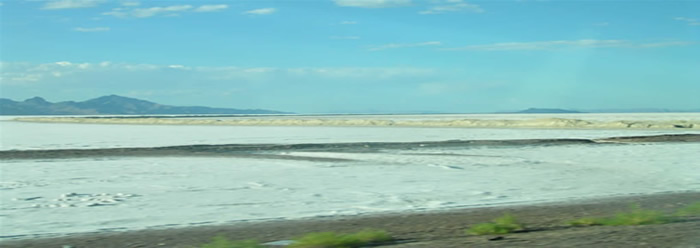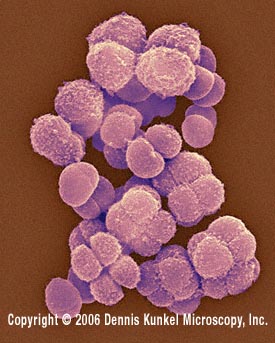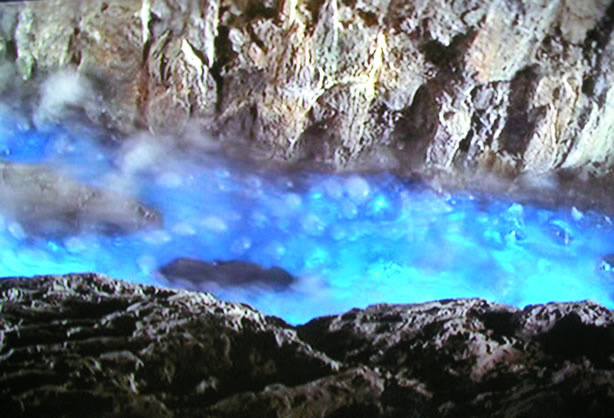Revisiting 'The Outer Reaches of Life'
Author: M. Crasnier-Mednansky, Ph.D., D.Sc.Copyright © 2006 Mednansky Institute, Inc.
Twenty five years after Microbes and Man was largely read and acclaimed, microbiologist Professor John R. Postgate1 wrote a novel essay The Outer Reaches of Life, first published in 1994. His endeavor was to describe, to non-scientist readers, microbial life as it exists in extreme terrestrial environments where temperatures, pressures, or other factors, have been foreseen as unbearable to any kind of life as we know it. Bacteria however have been found in such environments, and have established exotic, or some might say, eccentric ways of coping with extreme conditions. John Postgate's account of these 'extremophiles' is both fascinating and sensational, and remains contemporary after more than ten years of active related research. Each chapter bears striking titles (underlined in this text), and is illustrated with hobyahs (the causing-trouble imp-like creatures visualized by John Dickson Batten).
1Professor John R. Postgate, FRS, died on October 22, 2014 at the age of 92The information voyage begins where bacteria can only grow at temperatures well above the known range for terrestrial living organisms - Some like it hot. These 'hyperthermophiles', whose optimum temperature range is around and in some cases even above the boiling point of water, are found in the turbulent zones of deep-sea hydrothermal vents. How these microorganisms can survive at such elevated temperature and hydrostatic pressure (The big squeeze, another chapter) remains an open and fascinating question. Furthermore, they have been found to belong to a distinctive group of look-alike bacteria named archaebacteria (or more recently archaea), however since The Outer Reaches of Life was penned other hyperthermophilic bacteria have been found that cohabit with these archaea. Also undiscovered at the time, was the astonishing finding of a 'nanoorganism' growing on the surface of a normal-sized archaea in a submarine hydrothermal vent .
John D. Batten's illustration for Chapter 4: The big squeeze
A 'chilling transition' takes us to places where temperatures are near freezing point - Cool, man, cool. Life at these temperatures however had been known to occur, for example arthropods survive freezing in tundra by generating cryoprotectants. Microorganisms dominate the biomass in these cold environments including ocean depths, and polar and alpine regions. 'Psychrophilic' (cold-loving) bacteria are adapted to cold and die at temperature above 20°C (68°F). These bacteria like other extremophiles thrive in their native environment because of unique biological attributes.
A salty tale tells us of environments which are so salty that even marine creatures cannot live there. 'Halophilic' (salt loving) archaea however flourish in saturated salt solutions and on moist salt crystals. White salt flats turn from bright pink to deep red upon massive growth of one of them (Halobacterium salinarum). To cope with their habitat they maintain a high intracellular potassium chloride concentration (thereby balancing the osmotic pressure of the medium). They selectively 'pump in' potassium ions present in salt deposits and 'pump out' unwanted sodium ions.

Great Salt Lake Desert, Utah, USA
What do bacteria like? Some like Corrosive and slippery places like volcanic sulfur deposits or sulfur springs (the ones found there can corrode metals by thriving in highly acidic conditions), and soda lakes saturated with sodium carbonate (these like 'slippery' alkaline conditions). Some like Exotic menus including poisonous natural products, cellulose and lignin from plants, and oil (these are of great assistance in cleaning oil spills). Some like Life without oxygen (these do not need oxygen and sometimes do not tolerate it). Some like The inertness of nitrogen (these are called nitrogen-fixing bacteria and convert atmospheric nitrogen into a chemical form plants can use for growth). Some like Getting about with their wavy flagella, or Company, or if not A private space. And let's mention the 'strange berry that withstands radiation' (Deinococcus radiodurans) and its fantastic ability to survive extreme radiation and even grow under constant radiation. No doubt a daunting chapter to be written next!
5,000 times magnification of Deinococcus sp.
Copyright © 2006 Dennis Kunkel Microscopy, Inc.
Image use with permission from Dennis Kunkel
Are there places bacteria have not colonized? Maybe Life's outer reaches and, as John Postgate concludes, "It will be a supreme example of life's ability to extend its outer reaches - as so often, by altering its world to suit itself". However, in a more dramatic instance, while focusing on behavioral analogies between microbes and man, he conclusively writes "…even if mankind could find, and use, remedies or palliatives to the environmental and social problems which we are generating, we must still stop multiplying. This is a truth that many otherwise environmentally conscious people still prefer to forget, but there is no getting away from population control. We have only one Earth to live on - at present". Time maybe running short to save ourselves!
Miscellanea:The twilight zones of microbiology by John Postgate in Microbiology Today, 01 November 2000 (Volume 27)
Microbes and Man by John Postgate, 2000 fourth edition (ISBN-13: 9780521665797)
To Utopia and Back: The Search for Life in the Solar System by Norman Horowitz, 1986 (ISBN-10: 0716717662)
Captured frame from Columbia Pictures H.G. Wells' First men in the moon
Directed by Nathan Juran, associate producer cinematic genius Ray Harryhausen, release date 1964

"Life!" and immediately it poured upon us that our vast journey had not been made in vain, that we had come to no arid waste of minerals, but to a world that lived and moved! From The first men in the moonGoogleBook by H. G. Wells, 1901
Gustav Holst's The Planets performed by the Boston Symphony Orchestra with the New England Conservatory Chorus (in Neptune) conducted by William Steinberg, 1970
Minst.org Online Library Index